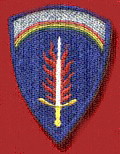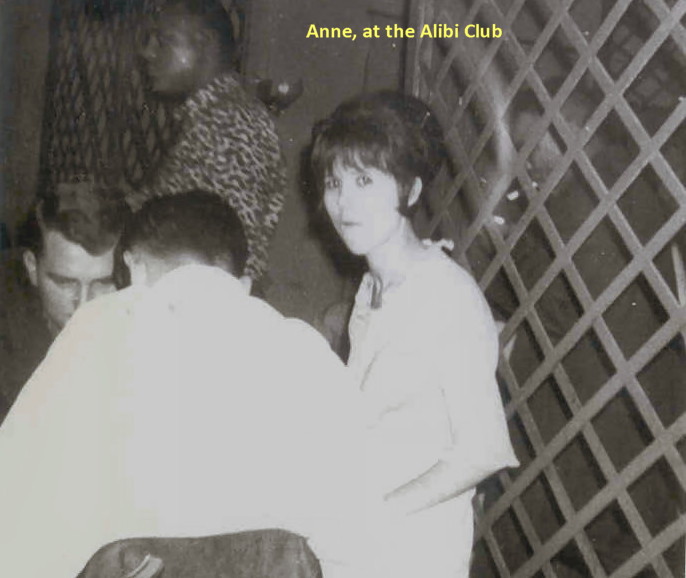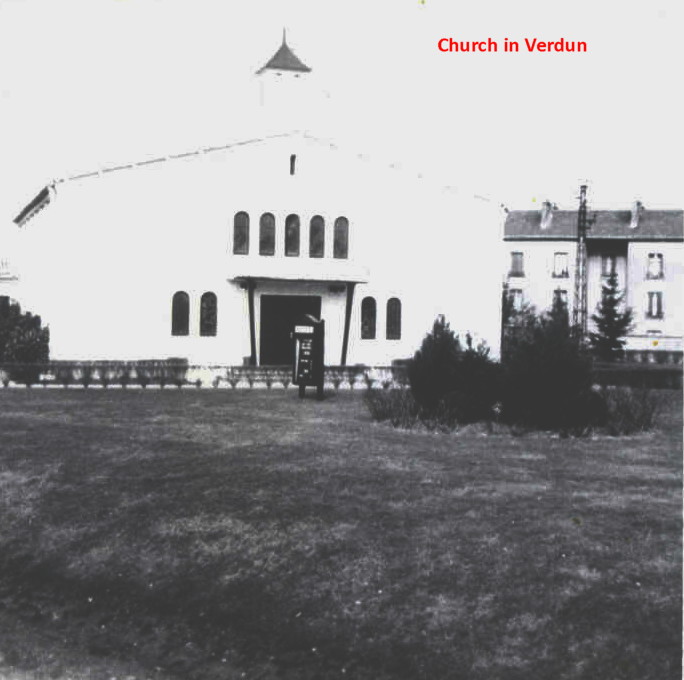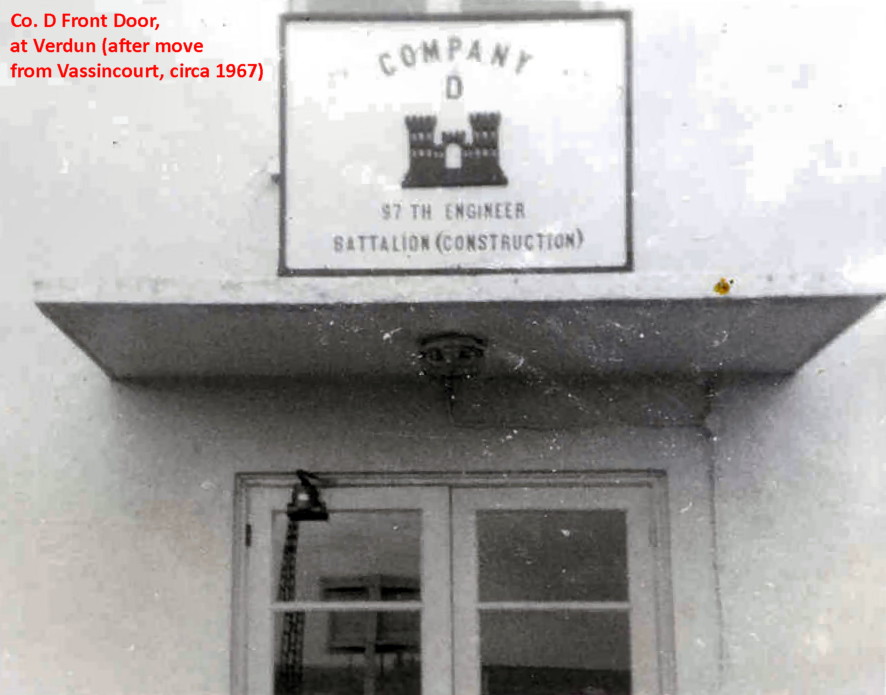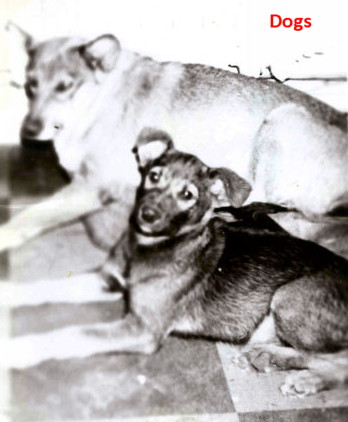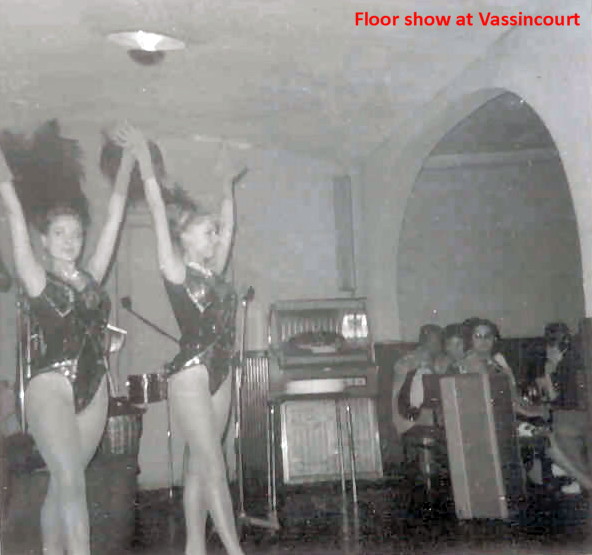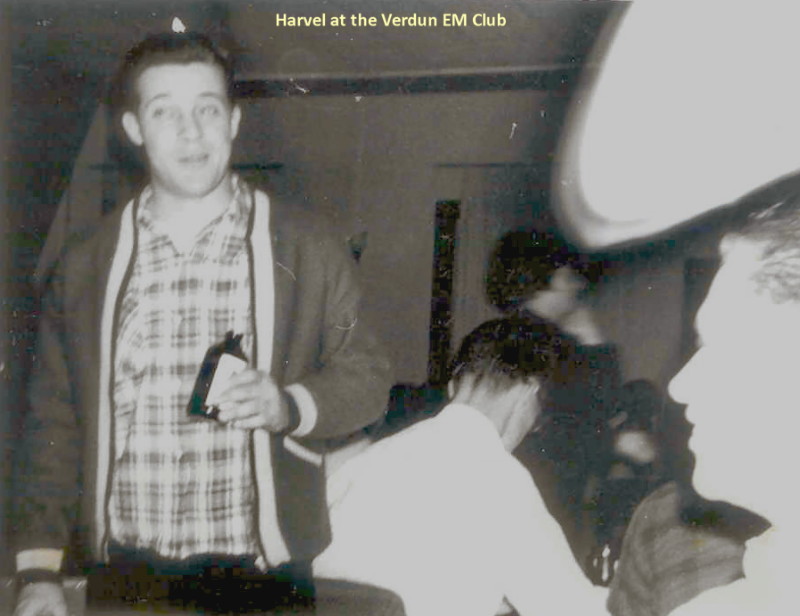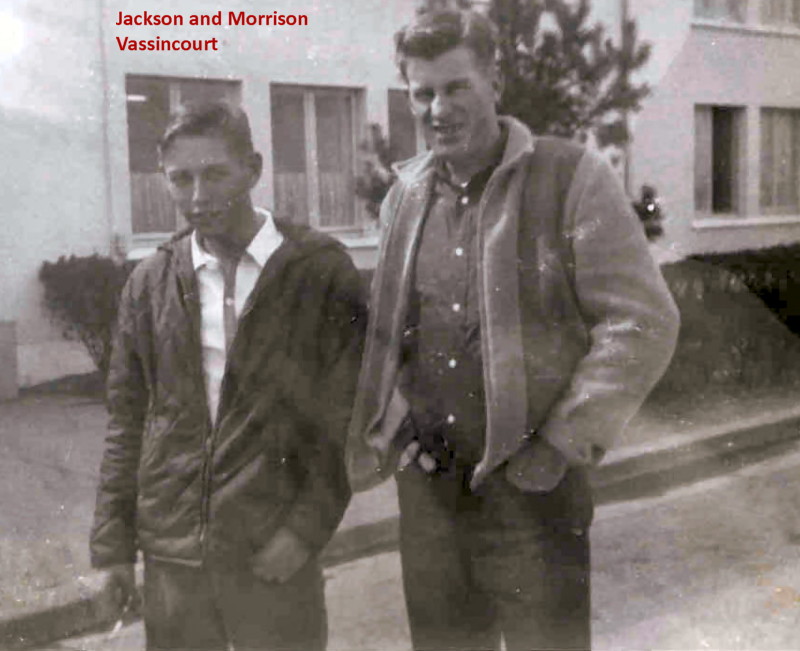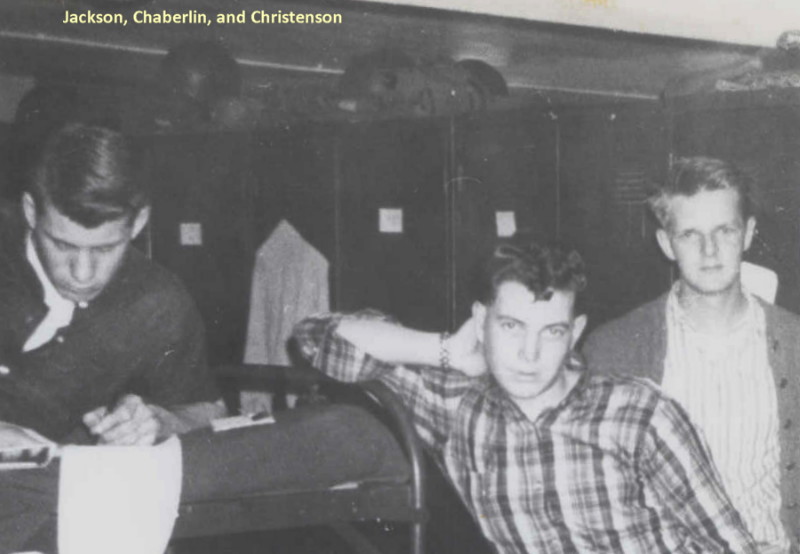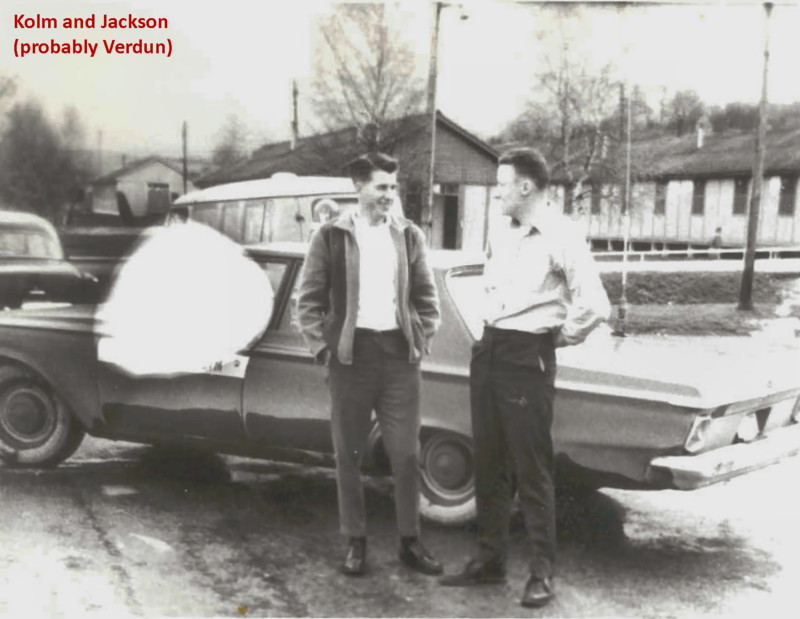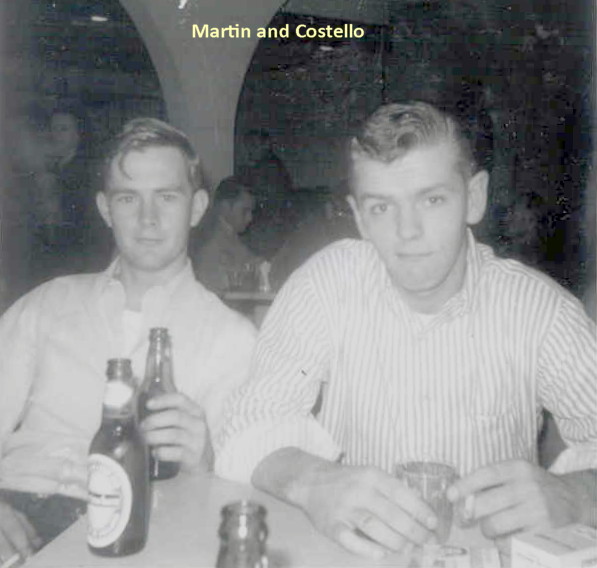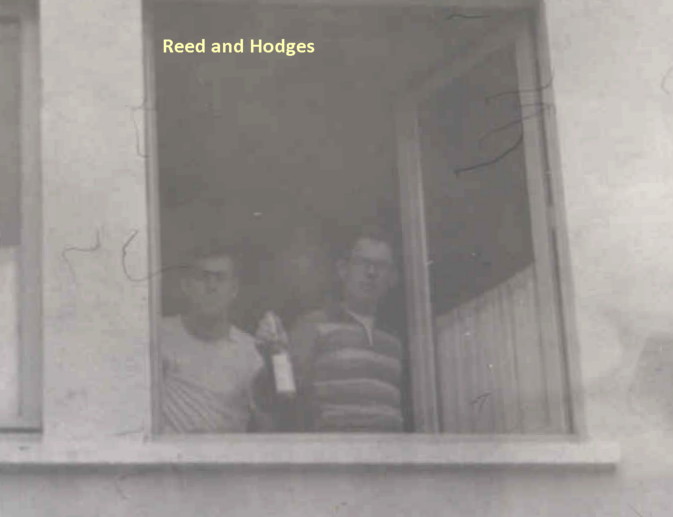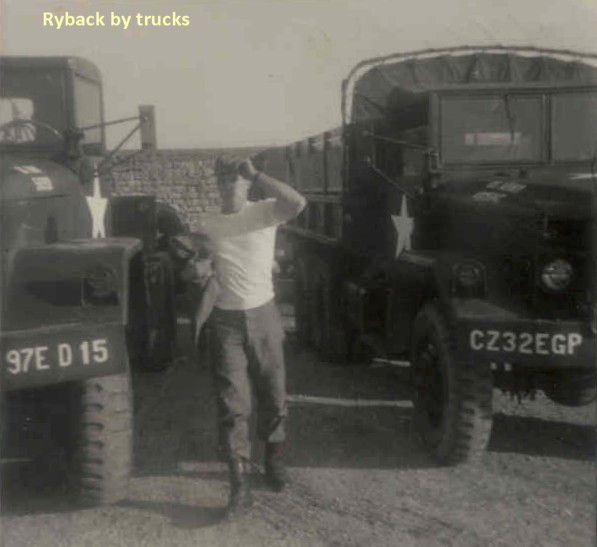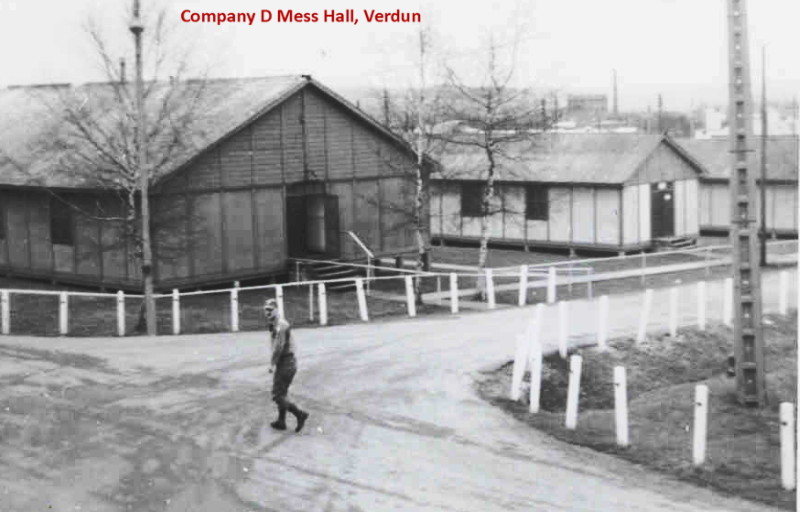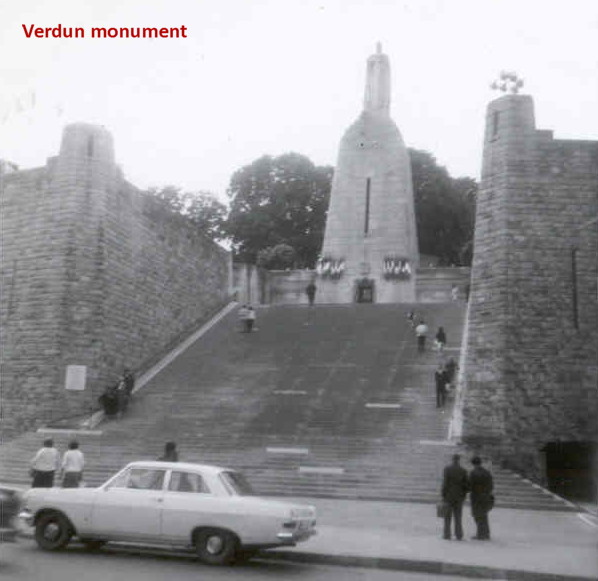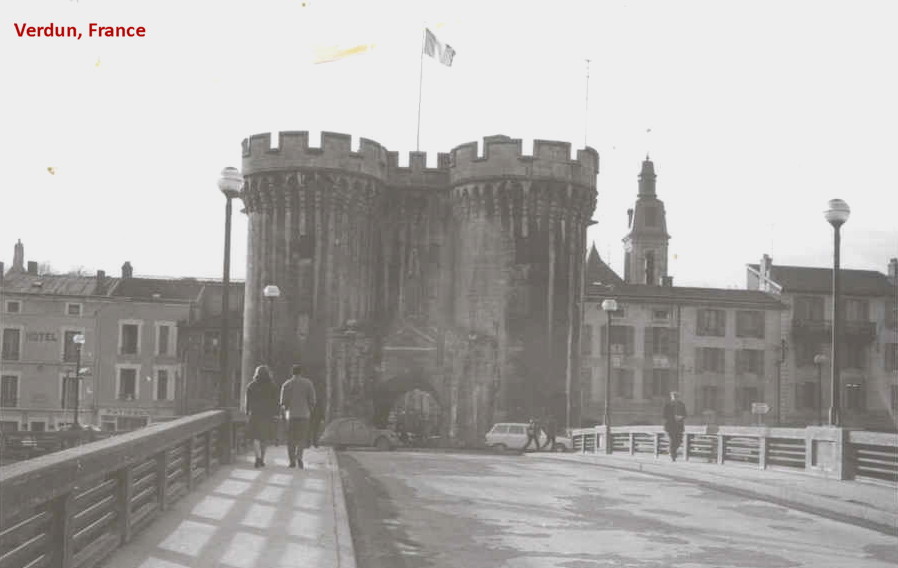Photo page 10 of 14
for the 97th Engineer Battalion (Construction)
(photos from Vassincourt and Verdun—1965 to 1967)
Oral history from Gary Andrews, a member of Company D as the unit moved from France to Germany:
Photos submitted by Gary Andrews, Company D:
"The pictures I sent have names below them. Anne was the bar maid across the street from the barracks in Verdun at the EM club. The pictures with the bunkers were by a little town in France, were we were building a pipeline and ammunition bunkers outside the town Of St. Mihael. There were amazing underground structures out side of town, some of them 2 and 3 stories underground. There was an underground highway that ran for miles, from Metz, France, to somewhere around Paris that was used mostly in WW1. We saw many passages that were caved in going into other rooms. We found evidence of a prisoner of war camp, with shackles on the walls, and a hospital—like facility.
I have looked at the St Mihael site on the internet many times and have found out that there are 284 Americans missing in action around that area. That has always troubled me, because of the passages we found caved in going into other rooms underground. I personally think some of our missing in action are probably entombed in there. I even tried to contact Tom Brokaw after he came out with the book, The Greatest Generation, but got no response from him.
The barracks we stayed in at St. Mihael had swastikas that had been covered up with stucco. The stucco was falling off, and you could plainly see the swastikas. We had old Polish cooks in France that told us many stories of WW2. They didn't have much respect for the French either.
That is about all I remember. We usually called each other by last names, such as Costello. I also have menus from mess halls during Christmas and Thanksgiving. Once my wife finds all of them, I'll send pictures of them. The photo that says me and Harvel, I'm in the foreground, with a white or light colored shirt on. As to your other email, Company D moved to St Mihael, France, for about a year, in 1965, and then went to Verdun for about another year, in 1966. We then moved into Pirmasens, Germany, in late 1966. They sent me and a couple other guys back to Verdun in February 1967 to leave for home, I was there for about a week or so and then they put us in a Paris Hotel for a few days before we left for home. I left Paris Orly Field Probably, around February 14, 1967. We flew into Kennedy Airport in New York, and then went to Fort Hamilton, New York, were I got my discharge on February 16th. I think the American government had a agreement with France that some of us left from France.
During the Spring and Summer of 1966, we were working in Verdun, at Fort Du Mont, building a couple of small buildings and paving a parking lot at the museum. One of our bulldozers dug up a 3-man machine gun nest from WW 2. The men were French soldiers and had identification on them. Our battalion commander in Etain contacted the French government, and they found some of the family members of one soldier. President De Gaule came to Verdun and presented the bones to the family and shook all of our hands there at Fort Du Mont. That made big news at the time and the account was in the Stars and Stripes newspaper and many American newspapers.
I wish I had kept that article. I have tried in past years to find it with no luck. I contacted the Stars and Stripes, but they were no help. They told me at that time to contact the Library of Congress, which I did, but they said they couldn't help me either, that I would have to come to Washington, DC, and look it up myself. It was shortly after that The French government asked NATO to have all American troops move out of France. They also asked that Germany or Italy should not be able to have armed forces. France said that France alone should be able to defend all of Europe. What a joke that was—or is; France couldn't even protect themselves.
I hope this answered some of your questions about Company D. I now live in Moline, Illinois, and grew up in Rock Island, Illinois, the next town from me. We call it the Quad Cities. We are right on the Iowa—Illinois border. The Mississippi River is in-between ....
Gary Andrews
"
Click on photo name to view in higher definition:

